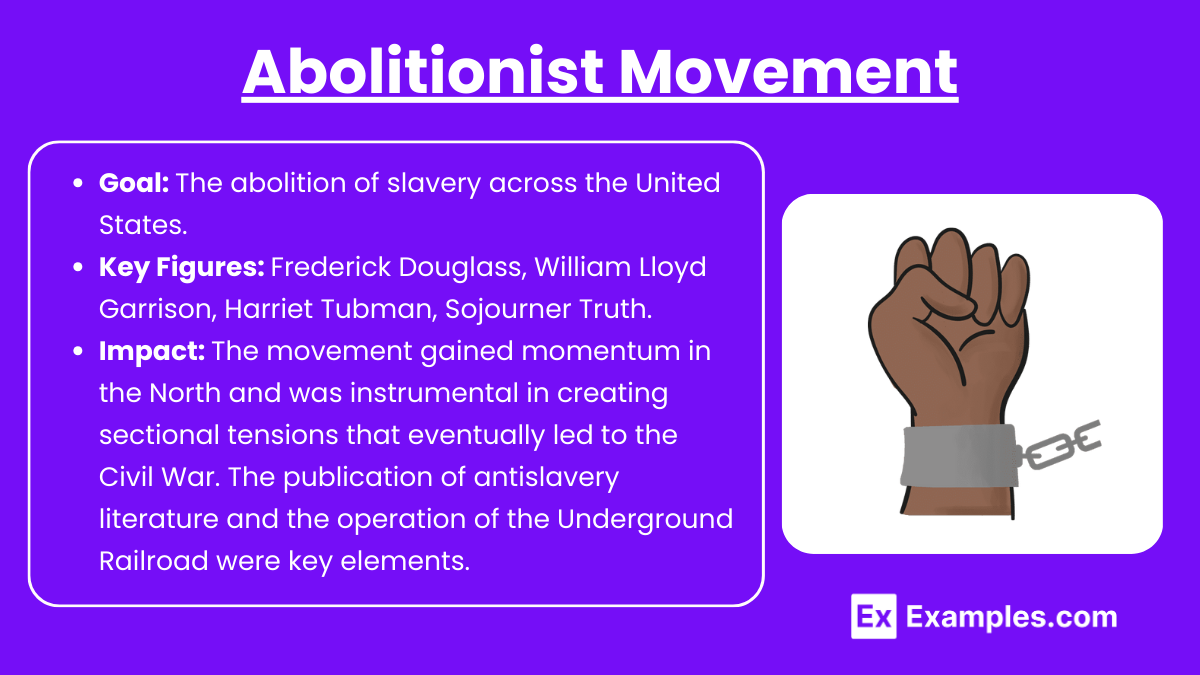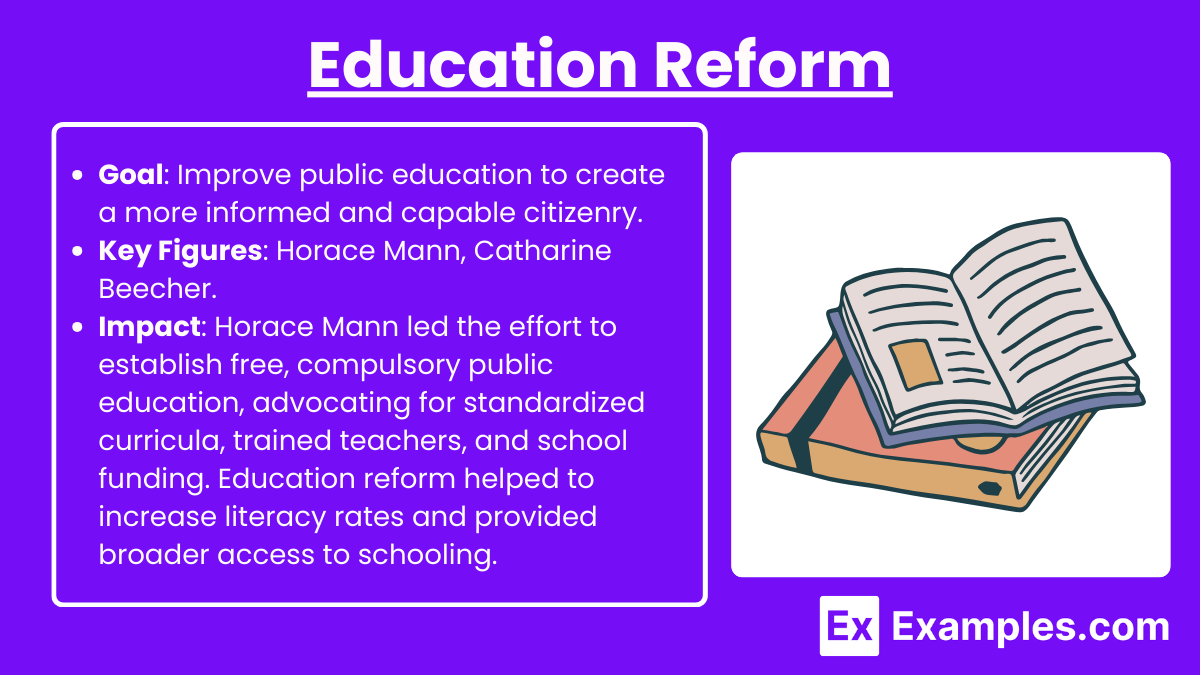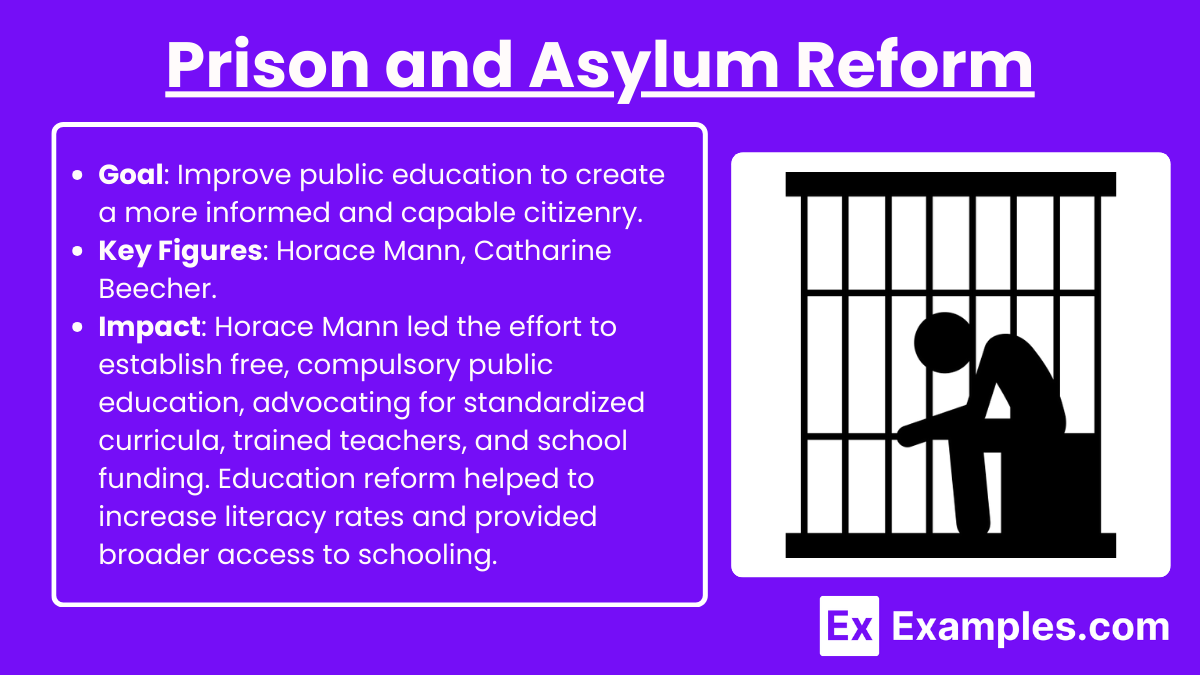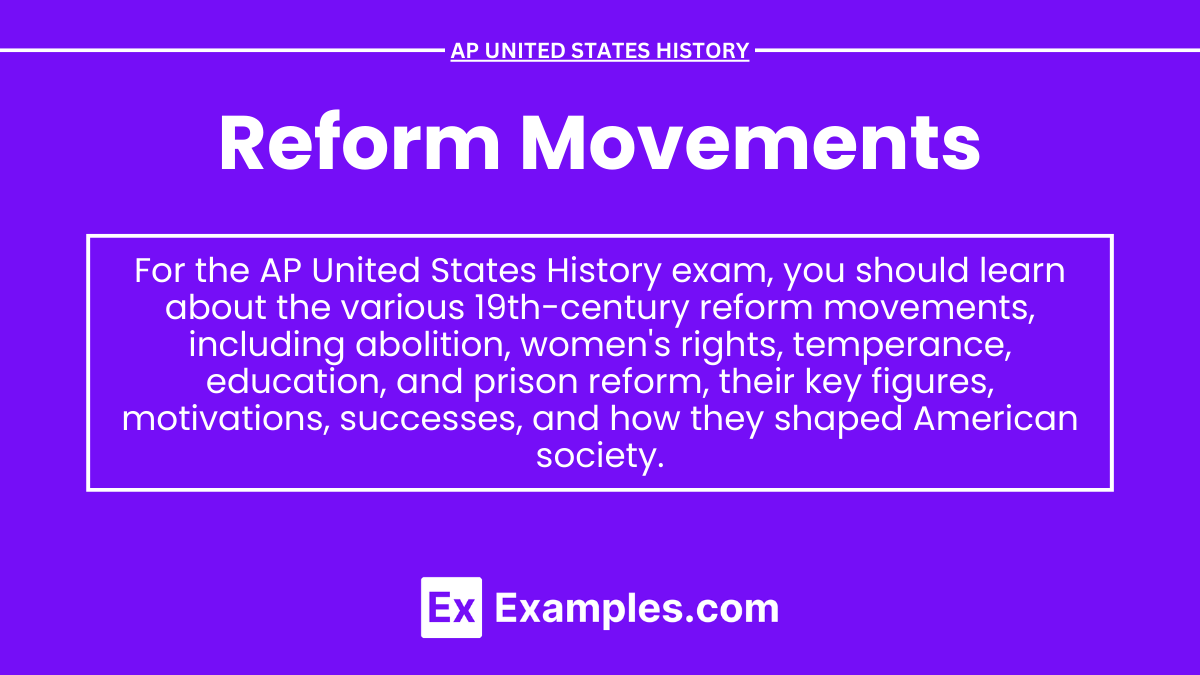In AP United States History, the Reform Movements of the 19th century represent a significant period of social, political, and religious activism aimed at addressing the challenges brought by industrialization, urbanization, and moral concerns. Spurred by the ideals of the Second Great Awakening, these movements sought to reshape American society by tackling issues such as slavery, women's rights, temperance, education, and prison conditions. The efforts of reformers during this era laid the foundation for future social progress and expanded the nation’s democratic principles.
Free AP United States History Practice Test
Learning Objectives
In studying the Reform Movements, you will be expected to analyze the causes and effects of 19th-century social reforms in the United States. The connections between these movements and broader historical trends, such as industrialization and the Second Great Awakening, will be examined. The roles of key figures and the impact of their efforts on American society will be understood. Additionally, you will explore how these movements contributed to the expansion of democratic ideals and influenced future social change.
Key Reform Movements
Abolitionist Movement

Goal: The abolition of slavery across the United States.
Key Figures: Frederick Douglass, William Lloyd Garrison, Harriet Tubman, Sojourner Truth.
Impact: The movement gained momentum in the North and was instrumental in creating sectional tensions that eventually led to the Civil War. The publication of antislavery literature and the operation of the Underground Railroad were key elements.
Women's Rights Movement

Goal: Achieve equal rights for women, including suffrage (the right to vote).
Key Figures: Elizabeth Cady Stanton, Lucretia Mott, Susan B. Anthony, Sojourner Truth.
Impact: The Seneca Falls Convention of 1848 marked the formal beginning of the women's rights movement, issuing the "Declaration of Sentiments" that called for equality. The movement eventually led to the passage of the 19th Amendment in 1920.
Temperance Movement

Goal: Reduce or eliminate alcohol consumption to combat social problems such as domestic violence and crime.
Key Figures: Lyman Beecher, Frances Willard, the American Temperance Society.
Impact: The movement gained widespread support, particularly among women and religious groups. It culminated in the passage of the 18th Amendment in 1919, establishing Prohibition, although it was later repealed by the 21st Amendment in 1933.
Education Reform

Goal: Improve public education to create a more informed and capable citizenry.
Key Figures: Horace Mann, Catharine Beecher.
Impact: Horace Mann led the effort to establish free, compulsory public education, advocating for standardized curricula, trained teachers, and school funding. Education reform helped to increase literacy rates and provided broader access to schooling.
Prison and Asylum Reform

Goal: Improve conditions for prisoners and the mentally ill, focusing on rehabilitation rather than punishment.
Key Figures: Dorothea Dix, Samuel Gridley Howe.
Impact: Dorothea Dix’s advocacy led to the establishment of better facilities for the mentally ill, moving them from prisons to asylums. The movement also sparked broader discussions about humane treatment and the purpose of incarceration.
Key Themes and Impacts
Moral Improvement: Many reform movements were motivated by the belief that improving individual morality would lead to a better society. This was a direct influence of the Second Great Awakening.
Social Change: These movements addressed a wide range of social issues, from slavery to education, and laid the groundwork for future reforms in American society.
Intersectionality: Several movements were interconnected, with leaders like Sojourner Truth advocating for both abolition and women's rights, showing the overlap between different areas of reform.
Expansion of Democratic Ideals: Reformers sought to expand the principles of liberty, equality, and justice to groups that were previously marginalized, such as African Americans, women, and the poor.
Examples
Seneca Falls Convention (1848): The first women’s rights convention, where the "Declaration of Sentiments" was issued, marking a significant milestone in the women's rights movement.
The Underground Railroad: A network of secret routes and safe houses used by enslaved African Americans to escape to free states and Canada, supported by abolitionists.
The American Temperance Society: Founded in 1826, this organization advocated for the reduction of alcohol consumption, influencing later Prohibition laws.
Horace Mann's Educational Reforms: Mann’s work led to the creation of the modern public school system, emphasizing universal education.
Dorothea Dix’s Advocacy: Dix’s efforts resulted in the creation of specialized asylums for the mentally ill, highlighting the need for humane treatment.
MCQs
Which of the following was a key goal of the Temperance Movement?
A) The abolition of slavery
B) The promotion of universal education
C) The reduction of alcohol consumption
D) The improvement of prison conditions
Answer: C
Explanation: The Temperance Movement aimed to reduce or eliminate alcohol consumption, driven by concerns about its social effects.The Seneca Falls Convention of 1848 is most associated with which reform movement?
A) Abolitionist Movement
B) Women's Rights Movement
C) Temperance Movement
D) Prison Reform
Answer: B
Explanation: The Seneca Falls Convention was a key event in the Women's Rights Movement, where the "Declaration of Sentiments" was issued.Which reformer is most closely associated with the establishment of free, compulsory public education in the United States?
A) Dorothea Dix
B) Susan B. Anthony
C) Horace Mann
D) Frederick Douglass
Answer: C
Explanation: Horace Mann is known as the "Father of the Common School" for his work in establishing public education systems


